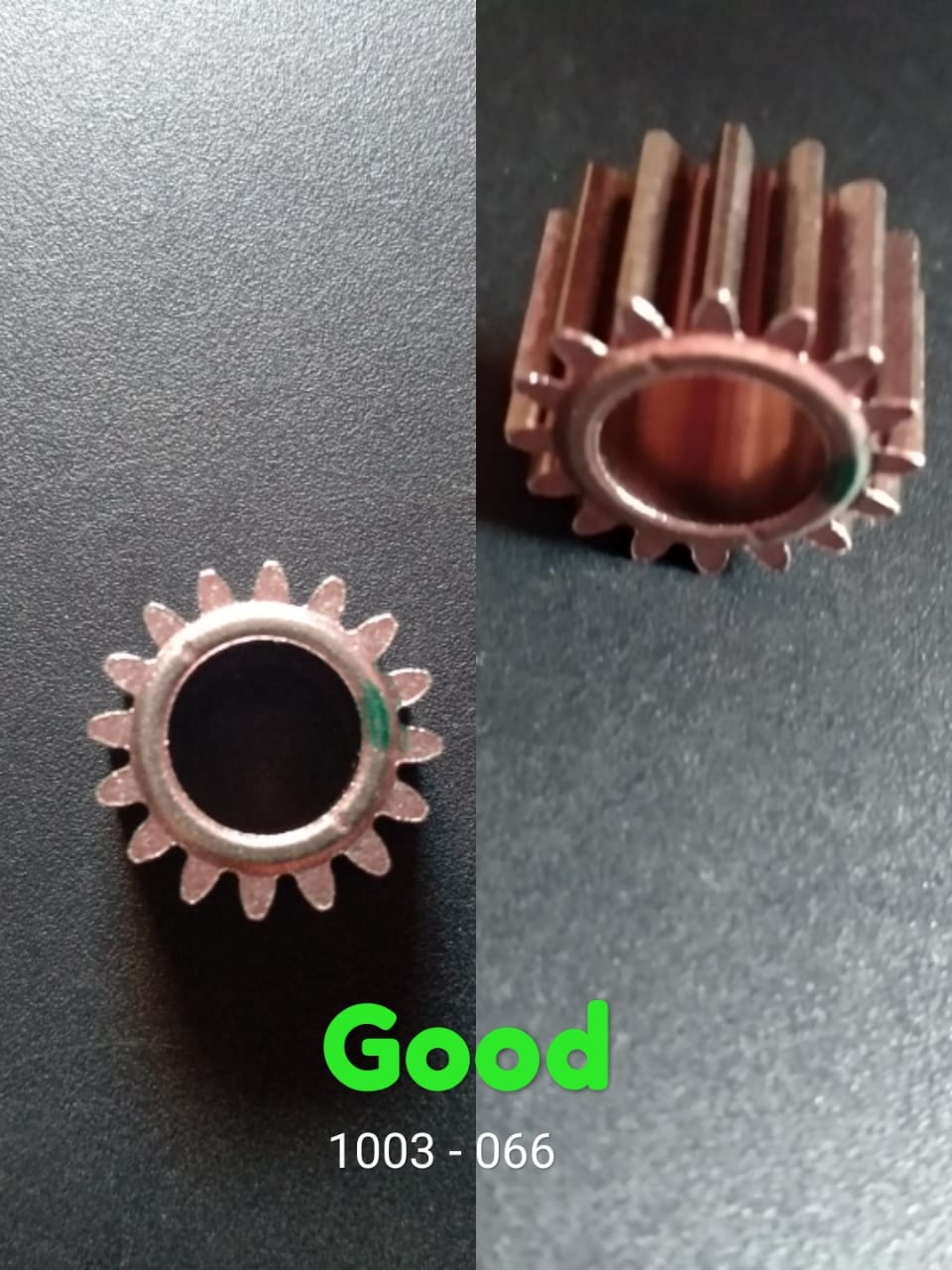Camera for Gear Inspection
Hello,
We are planning to setup a camera system for gear inspection and defect detection. The images of gears are given below

The maximum diameter of gear will be 25 mm. Also we need an accuracy in the order of 15 micro meters in measurements.
The time the gear will be stationary under the camera will be 300 milli second. Within this time we have to complete the image capture and processing of the image. Processing includes gear measurements and defect detection.
Can we use rolling shutter camera for this setup instead of global shutter?
We are planning to use usb 3 interface as we need a cable length of max 2.5 metres. Is their any other advantage in GigE other than the cable length?
What kind of camera configuration do you suggest for this project? (Like resolution, fps, Field of view etc) Also what kind of illumination(Back light or ring Light or some other) and lens will be the best for this application
Thanks Amal

I recommend you contact and talk to these guys: http://www.physimetrics.com/
Ok, Thanks for the info
Well, this is not an easy task. You need an accuracy of ~1/2000, so a high resolution.On global shutter cameras you are limited to 5MP. Anyway, I recommend monochrome cameras, as they have a better resolution (no Bayer filter).
For 300ms (1/3s) acquisition time you can use global or rolling shutter. Remember that you have to take into account the transfer time between the camera and the computer when estimating the processing time.
5MP monochrome cameras give an accuracy of 2micrometre×2micrometre.Wont this be enough?
How much transfer time do you think it will take to transfer data over a 3metre USB3 cable?
I think you mistake the sensor pixel size (i.e. the surface of a phototransistor) with the optical resolution of the camera.
Concerning the bandwidth: a 5MP image takes 5x8=40Mbits. Having a real bandwidth, you can compute the transfer time of the image. For example for GigE the real bandwidth varies between 400-800Mb/s. So with a low end network adapter you get 0.1s transfer time, with a high end adapter it's 0.05s.
I think you are right in case of pixel size, thanks
So if we are using a resolution of 6MP (3000*2000) and we have max area to be scanned equal to 30×30mm, then size of one pixel equals 30000micro metre/ 3000 =10um and 30000/2000 =15um. So we can meet the requirements.Is this correct?
USB 3 shows a bandwidth of 640 mega bytes per second.= 5120 mega bits per second.
6mp = 6×8 = 48mb
So transfer speed is 0.009 sec. Is this correct?
There is always a difference between theory and practice. So while in theory your resolution is at 15um, I'm not sure that in real life you will have that precision. To be tested anyway. Same with the USB bandwidth, you'd better test the real transfer rate instead of the data in the specs.
Thanks @kbarni, I will keep this in mind
Also, don't underestimate the need for a high quality lens for this fine resolution work. We recently worked on a project with similar resolution specs. Fortunately they spent the money on a very nice lens that made the work easier. Little or no lens distortion. The guys at www.physimetrics.com can help you with this.